If you’re wondering how to get into ecommerce photography then you’re not alone. As the demand for online shopping grows, so does the need for high-quality images that can help products stand out.
Ecommerce photography involves capturing professional product photos that attract and engage customers.
This field is important for businesses looking to boost their sales, enhance customer trust, and create a memorable shopping experience.
What’s even more exciting is that the ecommerce photography industry is expanding rapidly. It offers plenty of opportunities for both established photographers and newcomers.
Why is ecommerce photography a valuable career or business opportunity? As more people shop online, businesses are eager to stand out with attractive and professional images.
If you’re considering how to get into ecommerce photography then you’re diving into a field with immense potential.
In this post, I’ll walk you through the key steps you need to take to break into ecommerce photography, share expert tips, and offer actionable advice to help you succeed.
We’ll cover everything you need to know to make your mark in this booming industry.
What is Ecommerce Photography?
Ecommerce photography is the art of photographing products for virtual stores.
This includes everything from shooting individual product images to creating lifestyle photos that showcase how a product can be used in everyday life.
It differs from traditional photography by focusing on clarity, consistency, and capturing products in a way that encourages potential customers to buy.
In ecommerce, the goal is not just to showcase the product but to make it as appealing as possible.
Good ecommerce photography helps potential buyers imagine themselves using or owning the product. This also builds trust and drives sales.
Want Help with Editing Your Ecommerce Photographs? Contact Us!
Importance for Ecommerce Photography in Businesses
High-quality product photos are essential for ecommerce businesses. The images act as the primary visual touchpoint between the business and potential customers. Because customers can’t touch or try out the products online.
Great images ensure customers can clearly see the details, colors, and features of a product. It also makes it easier for them to make informed purchase decisions.
It’s a fact: customers trust products that are shown clearly in high-quality images, and this trust leads to higher conversion rates.
If you’re considering how to get into ecommerce photography then knowing the impact of great visuals on sales should motivate you.
Ecommerce businesses that invest in professional photography see better customer engagement, more repeat buyers, and higher sales.
The right photos can even reduce return rates by accurately portraying products.
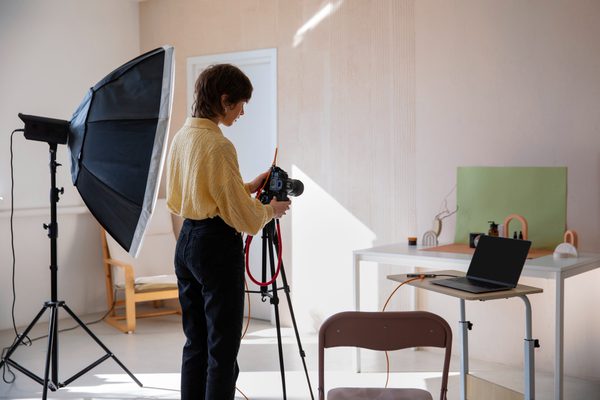
Examples of Ecommerce Photography
There are several types of ecommerce photography that you’ll come across. Some of the most common include:
- Product Photography: A straightforward image showing the product. Usually with a white background to focus on the item itself.
- Lifestyle Photography: These images show the product in use or in a real-life context to help customers visualize how it fits into their daily lives.
- 360-Degree Photography: Allows customers to view the product from every angle. This is often seen with electronics or fashion items.
- Detail Shots: Close-ups that focus on intricate details of a product like stitching, texture, or features.
These examples will give you a sense of what to focus on and why having a variety of shot types is important.
As you get deeper into ecommerce photography, mastering these different techniques will make you more versatile and marketable.
Top Professional Ecommerce Image Editing Services
Why Ecommerce Photography Is In-Demand Right Now
The ecommerce industry has been growing at a rapid pace, and it shows no signs of slowing down.
More businesses are moving online, and established brands are increasing their digital presence.
As a result, the demand for professional ecommerce photographers has skyrocketed. Brands need images that capture their products in the best light, and photographers are stepping in to fill this need.
The rise of social commerce (shopping directly through social media platforms) has only increased the need for high-quality and visually engaging product images.
People now expect their online shopping experience to feel seamless and visually appealing. That’s why companies are investing heavily in photography to meet these expectations.
The Power of Visuals in Online Shopping
In an online store, visuals are often the only way to show customers what they’re buying. Buyers rely heavily on product images to make purchase decisions.
Think about it: when was the last time you bought something online without carefully checking its pictures? Exactly. That’s why great ecommerce photography is crucial.
Products that are showcased with clear and high-quality images are far more likely to convert into sales. Studies have shown that products with high-quality visuals are viewed more often and sold faster than those with poor or blurry photos.
Opportunities for Photographers
If you’re wondering how to get into ecommerce photography, here’s the good news: the opportunities are abundant. More businesses are realizing the value of investing in skilled photographers to create professional, high-converting product images. If you’re freelancing or looking for full-time work then the demand for ecommerce photographers is on the rise.
Ecommerce photography can be a lucrative career option. Especially if you build a strong portfolio and establish a niche.
Many photographers choose to specialize in specific product categories such as fashion, beauty, or tech, which helps them stand out in a competitive market.
Before we dive deeper into the actionable steps and expert tips on how to get into ecommerce photography, let me remind you that starting your photography journey takes time and practice.
By the end of this post, you’ll have a clearer idea of how to take your first steps, build a portfolio, and start getting clients. So, let’s move on to the next section and explore the key skills you need to get started!
How to Edit Photos for Ecommerce That Boost Conversions
How to Get Into Ecommerce Photography: Step by Step
If you’re wondering how to get into ecommerce photography then the key is to start with the basics. You need to equip yourself with the right tools and practice as much as possible.
Let’s break down the steps you need to take to get started on the right foot.
Step 1: Learn the Basics of Photography
Before diving into ecommerce photography, it’s essential to understand the fundamentals. Knowing how to use your camera, adjust lighting, and compose shots will set you up for success.
Importance of Understanding Lighting, Camera Settings, Composition, and Focus:
Good lighting is the backbone of great product photography. If you’re using natural light or artificial lights then you need to understand how light interacts with your subject can make or break a photo.
Similarly, knowing your camera settings (such as aperture, shutter speed, and ISO) allows you to control how much light hits your sensor and how your image turns out.
Composition is equally important. You need to make sure your product is framed well and the focus is sharp. It’s not just about capturing an image but it’s about showing the product in its best light to encourage customers to buy.
By learning basic photography techniques you’ll be on the path to creating excellent ecommerce product images.
What Is Ecommerce Photography? A Simple Guide
Step 2: Invest in the Right Equipment
You don’t need to break the bank on high-end gear when you’re just starting out. Having the right equipment will also help you produce professional-quality product images.
Essential Gear for Ecommerce Photographers:
- Camera: A DSLR or mirrorless camera with manual settings is ideal for ecommerce photography. These cameras give you full control over your shots. Also, helps you to adjust settings like exposure and focus.
- Lens: A standard 50mm lens is a great option for beginners as it’s versatile and affordable. If you want to capture more detailed close-ups then consider a macro lens.
- Tripod: A sturdy tripod helps ensure that your product photos are sharp and free from camera shake.
- Lighting Kit: Good lighting is crucial for ecommerce photography. You’ll also need softbox lights or ring lights to eliminate shadows and create even lighting for your products.
- Backdrop: A simple and neutral backdrop (such as white or light gray) helps keep the focus on your product.
Budget Options for Beginners and Professional Setups for Advanced Photographers:
If you’re on a budget then you can start with affordable lighting kits and cameras. You can upgrade as you gain experience.
For more advanced photographers, investing in higher-end equipment like studio lighting and professional-grade cameras can help elevate the quality of your work.
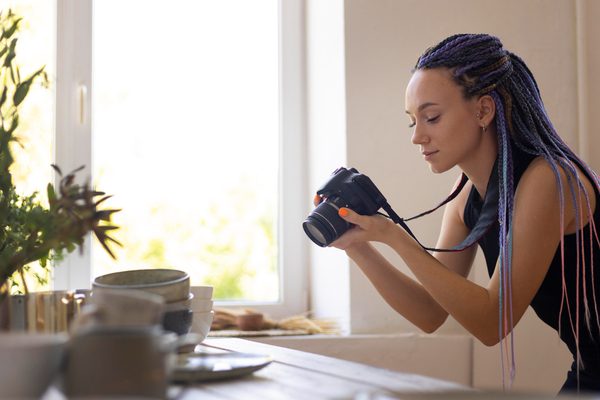
Step 3: Master Editing Software
Once you’ve taken your photos, the next step is editing. No photo is perfect straight out of the camera, which is where editing software comes in.
Learning how to use tools like Adobe Photoshop and Lightroom can help you enhance your images and make your products shine.
Importance of Photo Editing and Retouching Tools:
Photo editing allows you to adjust exposure, color balance, and contrast to create images that look polished and professional.
Retouching tools help remove distractions. Such as blemishes or background clutter and making your product the focal point of the image.
Best Ecommerce Image Editing Software for Flawless Product Photos
Basic Editing Techniques to Enhance Product Photos:
Start by learning how to crop, straighten, and adjust the lighting of your photos. Then you can dive into color correction to make sure your product’s colors look true to life.
Finally, use the retouching tools to remove any imperfections or distractions in the image.
If you’re serious about ecommerce photography then mastering photo editing is a must. This will give you the ability to enhance your product photos and make them more appealing to customers.
What is the best size for ecommerce product images
Building Your Ecommerce Photography Portfolio
A strong portfolio is essential for getting hired as an ecommerce photographer. But how do you build one when you’re just starting out? Let’s break down the steps.
Step 1: Start with Personal Projects
One of the best ways to start building your ecommerce photography portfolio is by photographing items at home or for friends and family. You don’t need to wait for paid work to get started.
By shooting things like clothing, accessories, or even household items, you can create a range of product shots to showcase your skills.
Showcasing Different Styles of Product Photography:
As you build your portfolio you need to make sure to include different styles of product photography. This can include:
- White background product shots: Clean, simple, and focused on the product.
- Lifestyle shots: Show how the product fits into everyday life. Such as clothing being worn or gadgets being used.
- Detail shots: Focus on close-ups that show off specific features of the product.
You’ll give potential clients an idea of your range by showcasing a variety of product photography styles.
Step 2: Offer Free or Discounted Services
If you’re struggling to find paid work right away then consider offering your services for free or at a discounted rate. This can help you build your portfolio, gain exposure, and get testimonials from clients.
Many small businesses or startups are looking for affordable photography services. This can also be a great way to get your foot in the door.
While it might feel like you’re not getting paid, the experience and portfolio you’ll build in return are invaluable. Over time, you can increase your rates as your skills and client base grow.
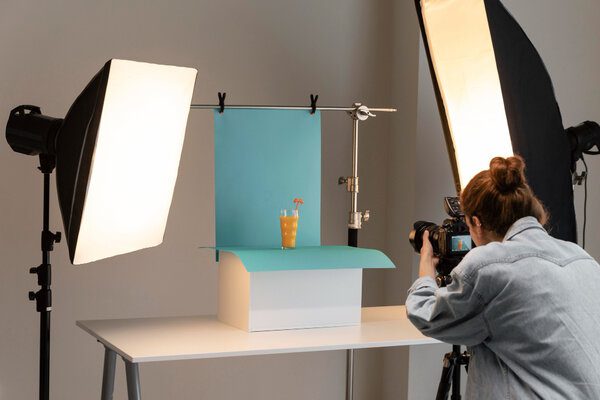
Step 3: Create a Stunning Online Portfolio
Having a professional-looking online portfolio is crucial in the ecommerce photography world. It’s your chance to show potential clients what you can do.
You can also create a portfolio on platforms like Squarespace, Wix, or even a dedicated photography website.
Importance of a Professional Website or Online Portfolio:
Your portfolio should be easy to navigate and showcase your best work. Include clear categories (e.g., product photography, lifestyle shots, etc.) to help potential clients find exactly what they’re looking for.
When building your online portfolio, keep it simple, clean, and focused on your photography. Make sure it loads quickly, is mobile-friendly, and reflects the professional image you want to convey.
How to color match images for eCommerce: Complete Guide
How to Find Ecommerce Product Photography Clients
Now that you have the skills and portfolio, it’s time to find clients. Here are some tips on how to get into ecommerce photography and how to find ecommerce product photography clients.
Step 1: Network with Ecommerce Businesses
Networking is one of the best ways to find ecommerce photography clients. You can reach out to small business owners, ecommerce stores, and online retailers.
You can also join ecommerce communities and forums where business owners are looking for photographers.
Offer your services and let them know how you can help improve their online product images. Building relationships with ecommerce businesses can lead to long-term partnerships and consistent work.
Step 2: Use Freelance Platforms
Freelance platforms like Upwork, Fiverr, and Freelancer are great places to find ecommerce photography jobs. Setting up a profile on these platforms allows you to showcase your portfolio and apply for jobs directly from clients looking for photographers.
Make sure to highlight your ecommerce photography skills and include a strong portfolio. This can also help you stand out from the competition and land clients faster.
Step 3: Leverage Social Media for Exposure
Social media platforms like Instagram and Pinterest are perfect for photographers. Use them to showcase your ecommerce photography work and attract clients.
Instagram, in particular, is great for building a visual portfolio, while Pinterest can help you drive traffic to your website.
Be consistent with posting, engage with followers, and use relevant hashtags to expand your reach. Effective social media marketing can help you build your brand and connect with potential ecommerce clients.
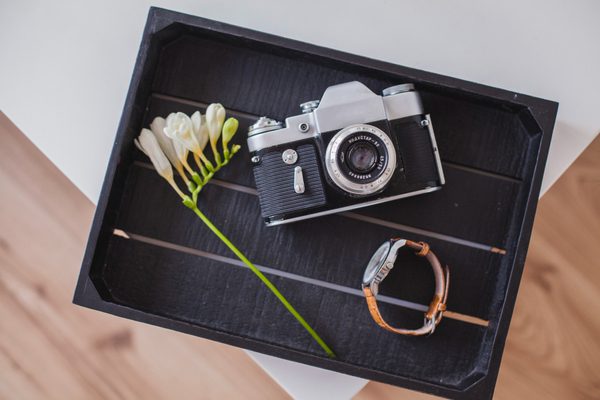
Pricing Your Ecommerce Photography Services
Now that you’re learning how to get into ecommerce photography, one crucial step is setting your rates. Let’s dive into eCommerce photography pricing and make sure your photography services are worth every penny.
How to Set Your Rates:
You need to consider factors like your experience, the expertise you bring to the table, and market demand. If you’re just starting out then it’s okay to start small and gradually increase your rates as you gain more clients and experience.
Research ecommerce photography rates to see where you fit in the market. Don’t be afraid to adjust as you grow.
Also, Check this Complete Guide on How much to charge for ecommerce photography
Creating Service Packages:
Offering eCommerce photography service packages is a great way to appeal to different types of clients. You can have a basic product shot package for those who need simple and clean photos.
A lifestyle image package for clients who want more context in their photos. Also, a full-scale photoshoot package for ecommerce brands looking for high-end and professional product images.
Negotiating with Clients:
Negotiation is a big part of any freelance work. If you’re getting into ecommerce photography then knowing how to negotiate fair pricing is essential.
Be clear about the value you bring and try to ensure both you and your client are satisfied with the terms. Don’t undersell yourself but also consider what works for your client.
Ecommerce Photography Tips and Techniques
It’s essential to learn a few key techniques that will elevate your photos in your journey to get into ecommerce photography.
Lighting Techniques for Ecommerce Photography:
Good lighting can make or break a product photo. To achieve professional-looking photos, you must master lighting techniques.
Natural light is great, but don’t shy away from artificial lighting if it helps you achieve the perfect shot.
How to Photograph Different Types of Products:
Ecommerce photography isn’t a one-size-fits-all deal. Different products require different approaches.
Small items might need close-up shots, while large products need more space. Textured products like fabric or wood need careful attention to avoid distorting the details.
Reflective surfaces, on the other hand, might need extra lighting to reduce glare.
Composing Stunning Ecommerce Photos:
Composing a photo is about more than just taking a picture. You need to focus on creating a visually appealing image that highlights the product.
Keep your composition clean, make sure the product is the focal point, and aim to keep things simple to avoid distracting your customers.
Post-Processing Tips:
Editing is key to ensuring your product photos are polished and consistent with the brand’s aesthetic.
Basic editing includes removing backgrounds, adjusting colors, and ensuring all images align with your client’s style. You don’t have to over-edit, but small tweaks can make a huge difference.
How to take product photos for ecommerce according to experts
Common Mistakes to Avoid in Ecommerce Photography
When learning how to get into ecommerce photography, it’s important to avoid some common mistakes that can ruin your images.
Mistake 1: Poor Lighting:
One of the most common issues is poor lighting. Shadows or harsh highlights can make your product look unappealing. Always make sure the lighting is soft and even.
Mistake 2: Incorrect Product Placement:
Your product should always be the focal point. Make sure it’s placed centrally and framed well. If it’s an item with a lot of details then ensure those are captured clearly and sharply.
Mistake 3: Low-Quality Images:
When working in ecommerce photography, high-quality images are a must. Low-resolution photos won’t cut it on ecommerce sites.
Always ensure your photos are clear, sharp, and ready for online display.
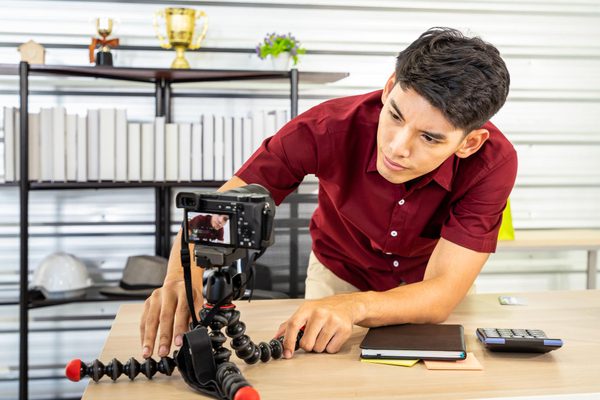
How Ecommerce Photography Can Help Scale Your Business
If you’re learning how to get into ecommerce photography, it’s important to understand why professional photography is a game-changer for businesses.
Let me show you how great product photos can make a big impact.
Increase Conversions:
Professional product images can instantly build trust and help your customers make quicker buying decisions. High-quality visuals showcase products in the best light
It gives buyers confidence that what they see is what they’ll get. Studies show that ecommerce conversion rates are higher when product images are clear, detailed, and visually appealing.
Enhance Branding:
Consistent and high-quality imagery isn’t just about looking good but it’s about building your brand’s identity. If your photos have a unique style or consistent editing then customers will start associating that look with your brand.
This creates familiarity and loyalty over time. Which is key to standing out in the crowded ecommerce space.
Attract More Traffic:
High-quality photos can also give your website an SEO boost. Search engines love websites that load fast and engage visitors.
Eye-catching photos encourage visitors to stay longer, interact with the site, and even share your product pages. This engagement can help improve your ranking in search results. It also makes your website more visible to potential customers.
Conclusion: Take the First Step Towards Your Ecommerce Photography Career
Now that you know how to get into ecommerce photography, it’s time to take action. Let me quickly recap the key steps to get started:
- Invest in the right equipment: Start with a camera and lighting setup that fits your budget and skill level.
- Build a strong portfolio: Create a collection of your best work that showcases your skills across different types of product photography.
- Network with potential clients: Use platforms like LinkedIn, Instagram, and even local business groups to connect with ecommerce brands.
- Stay consistent and practice: Every shoot will make you better. So keep learning and growing.
If you’re ready to take the plunge then start today. Your first step could be as simple as offering free or discounted shoots for small businesses to build your portfolio.
Before you know it, you’ll be on your way to becoming an ecommerce photography expert.
FAQs for “How to Get Into Ecommerce Photography: Expert Tips Inside”
How do I get started in ecommerce photography?
Getting started in ecommerce photography is all about practice and building a portfolio. Start by taking product photos using natural light or affordable lighting setups. Use a white background to make products pop. Edit your photos with software like Photoshop or Lightroom. Once you have a solid set of images, create an online portfolio to showcase your work.
What equipment do I need for ecommerce photography?
You don’t need the most expensive gear to start. A DSLR or mirrorless camera with a good lens (like a 50mm or 24-70mm) works well. A tripod, softbox lights, and a white backdrop will improve image quality. If you’re on a budget, even a smartphone with proper lighting and editing can work for beginner projects.
How do I price my ecommerce photography services?
Pricing depends on your experience, time, and the complexity of the shoot. Some photographers charge per image. Others set hourly or project-based rates. Beginners can start with $5-$20 per image and experienced photographers charge $50 or more per image. Research local competitors and set a price that reflects your skills and effort.
How do I get ecommerce clients for photography?
Start by reaching out to small businesses on Instagram, Etsy, and Shopify sellers. Many ecommerce store owners need product photos but don’t know where to look. Offer a free or discounted first shoot to build trust. Joining Facebook groups and networking at local business events can also help you find clients.
How to find ecommerce product photography clients?
Look for brands that sell online through Amazon, eBay, and independent websites. You can contact them via email or LinkedIn, showing them your portfolio. You can also list your services on freelancing platforms like Upwork and Fiverr, where businesses actively search for photographers.
Do I need a studio for ecommerce photography?
No, a studio is not necessary when starting. You can shoot from home using a small setup with good lighting. A clean white backdrop, a table, and soft lighting can create professional-quality images. If you plan to scale up then a studio setup with professional lighting is a great investment.
What editing software should I use for ecommerce photography?
Adobe Photoshop and Lightroom are the industry standards. They help adjust brightness, remove backgrounds, and enhance product details. If you’re looking for Adobe Photoshop alternatives then GIMP and Canva can also get the job done for basic edits.
How important is lighting in ecommerce photography?
Lighting is everything in ecommerce photography. Even the best camera won’t fix poor lighting. Soft and even lighting reduces shadows and highlights product details. Natural daylight also works great. But if you’re shooting indoors then softbox lights or ring lights are worth investing in.
Can I do ecommerce photography with a smartphone?
Yes, smartphones today have powerful cameras that can take sharp product photos. Use good lighting, a tripod, and editing apps like Snapseed or Lightroom Mobile to enhance images.
What types of ecommerce photography can I specialize in?
There are many niches in ecommerce photography, such as fashion, jewelry, electronics, food, and cosmetics. If you love a certain type of product then focus on that niche to stand out.

